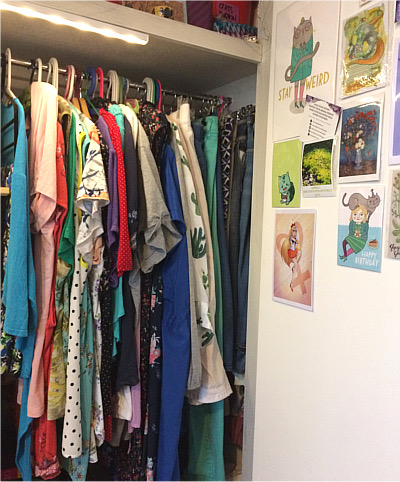Here is Part 2 of my Tips for KonMari De-Cluttering series. See here for Part 1!
* do I want a better version of this?
I love books. In fact, I'd categorise myself as a book collector. When I was younger, I bought many of the classics in cheap editions just so I could tick them off the 'read' list. I kept most of them out of habit, thinking I would read them again one day. Over time, I began to realise that these books, the stories that were special to me, deserved better. Now, once I've finished reading a cheap edition, I donate it, and if I want to re-read it and keep it forever, then I buy a hardback edition. Perhaps even one with illustrations or gold lettering. As much as I love books and want to have ALL the books, in this age of digital replications and ease of access, sometimes it's about quality, not quantity.
* would I buy this?
I've found this question useful in many situations when I was agonising about whether to keep something or not. Ask yourself: if I was standing in a shop right now and I saw this item for sale, would I buy it? I found this especially useful for gifts that people have given me. It gave me a sense of clarity. Instead of thinking about the person who gave it to me and being distracted by guilt, it helps me to think about my own personal tastes and how I feel towards the item itself.
* I just don't like it!
Many of the things we own are there for practical reasons -- things we have to live with whether we like it or not. Cleaning products, tools, and financial papers fall under this category. If these things don't spark joy, but we can't discard them, then how can we move forward with the KonMari process? Marie Kondo addressed this question in a talk a couple of years ago. She said that if something doesn't spark joy initially, think about what it does for you or what it will lead to for you. For example, cleaning products make your house cleaner and more pleasant to live in. The student who asked this question during the talk hated her textbooks, but Marie reminded her to think about what her studies will lead to in the future.
* alternatives to keeping it
In some cases, you can discard things if there's an alternative way of accessing it. This is especially relevant to books, papers and information. I asked myself: "Can I access my archived electricity bills online?" "If I ever want to re-read this book, is it on Open Library?" "Do I just want the pictures from this magazine?" "Will I ever have time to read this newspaper or can I access the same articles on their website?"
* it's joyful but not useful!
I found that I had many items I loved, but I didn't have any use for them. I didn't want to part with them just because of that, so I tried to find ways to re-purpose, re-use or re-make them. I used a vase for growing sweet potatoes. I glued ephemera such as ticket stubs and brochures into my art diary. I used a leaky mug as a pencil cup. A biscuit tin I was given for Christmas now holds knitting supplies. I'm sure there are endless ways of re-purposing items.
* it's not actually minimalism
This is more clearing up a misconception than an actual tip. The KonMari method is not minimalist! I think many people have this idea because the 'after' photos of homes tend to have a lot less stuff in them than the 'before' photos. (Well, a lot less visible stuff, anyway!) But nowhere does the method say you should throw away X amount of items or keep X amount. Marie merely says that you should keep all of the items that spark joy -- no matter how many or how few. This differs from person to person, and she acknowledges that. So if you were worried that the method involves throwing away things you really want to keep, it doesn't! It's all about what makes you happy, not how many/few things you have.
I'll leave you with a couple of photos of my shed. We're slowly re-organising it to become the storage hub of our dreams. Perhaps I'll write a shed makeover post one day!







No comments:
Post a Comment